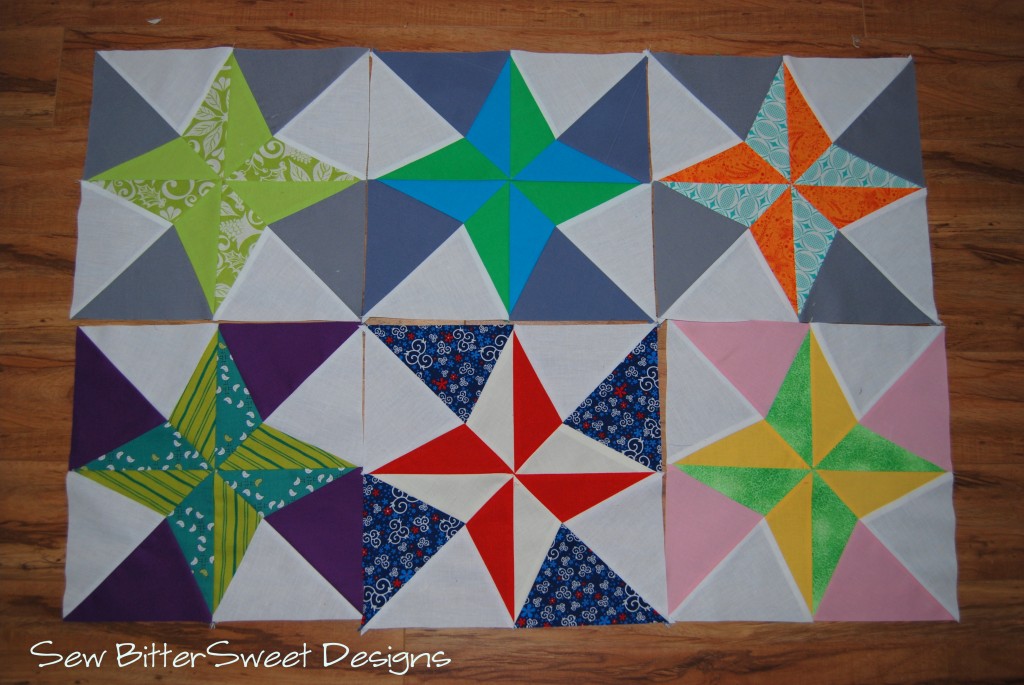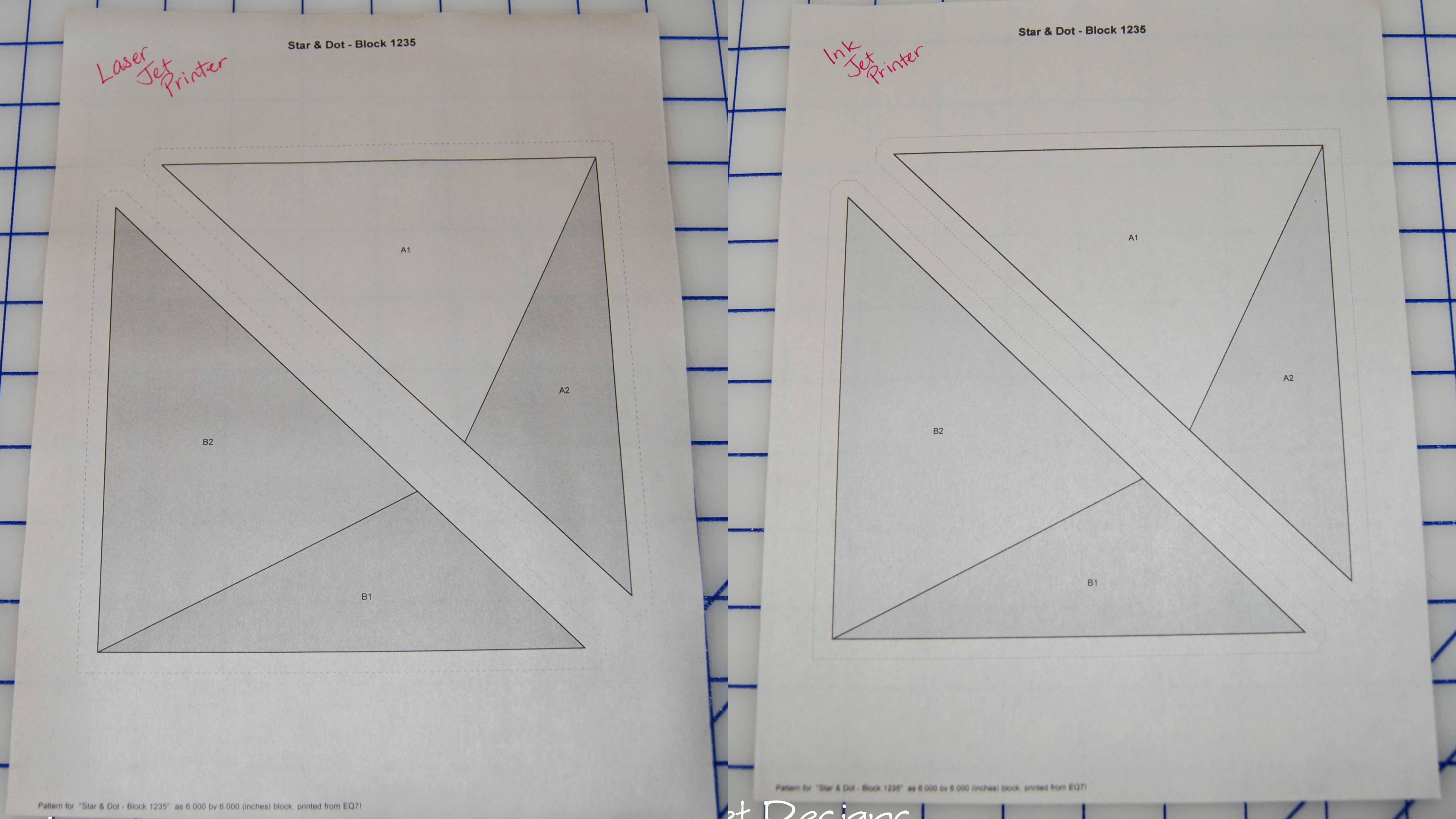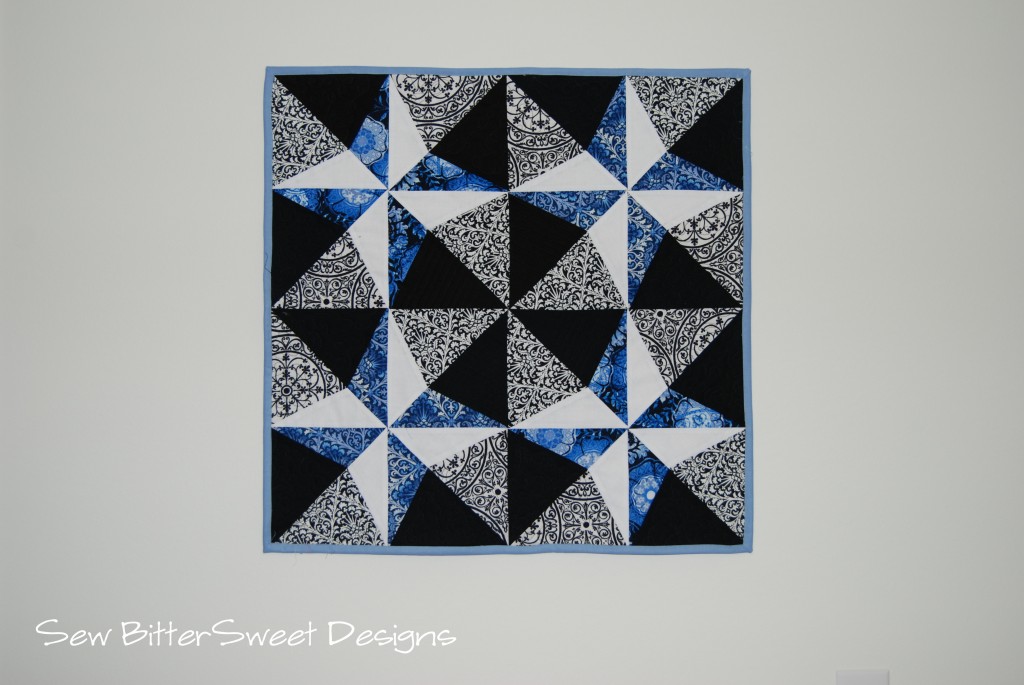One of my goals for 2012 was to conquer my fear of paper piecing, and from what I have read and had others tell me, paper piecing is a pretty common fear in the online quilting community. Well, this quarter I joined an online virtual quilting bee called the 3×6 Bee. We were asked to fill in a survey with our preferred type of bee: paper piecing, wonky, stars, pinwheels, etc. I said paper piecing and picked two others, well…I am in a hive that is all paper piecing blocks. This scared the day lights out of me at first but then I realized it was just what I needed to get over my fear of paper piecing!
I started out using regular printer paper for the foundation of my blocks. This worked fine but it was hard to tear off without stretching the stitches, it left behind little scraps which meant I was constantly pulling out my sewing tweezers to yank the buggers out, and I had to really lower my stitch length to 1.2 in order to get a nice tear. Keep in mind that a super low stitch length would be fine if it weren’t for the fact that I am still learning paper piecing and therefore I tend to have to rip out fairly often and those stitches are WAY to tiny for ripping out.
Then I tried Carol Doak’s Foundation Papers from Fat Quarter Shop. What a difference!
I could raise my stitch length to 1.6 – which is still low – but not so low that I can’t easily rip it out if I absolutely have to. Also, it is super thin which makes it easy to tear off at the end.
To give the paper a fair trial I tested it out in my laser jet printer and my ink jet printer:
When I put too many sheets in my ink jet, they got jammed and tore; however, feeding them one at a time I was able to get a very nice and even print. When I printed multiples on the laser jet, they tended to come out curled (this is due to the heat created by an ink jet printer) after a few minutes they flattened back out and were good to go.
Things I liked:
- I could use a larger stitch length and not worry about stretching my stitches when I removed the paper
- They are very light weight making it easy to sew through, this is easier on my needle and over all machine. The light weight feature means I do not have to change my needle as often when paper piecing.
- Being thin makes it relatively easy to see through them (see recommendations)
- I could use them on either of my printers – laser jet and link jet. This tells me that they would be fine for use on virtually any home machine
- They do not curl or become brittle when pressed – this is important as you do a lot of pressing when paper piecing
Recommendations:
- I would like to see them in come in white. They are a very light tan color and when paper piecing at night, even using an improvised light box (see tomorrow’s post), they can be a little hard to see through
- Be careful when using an ink jet printer and consider hand feeding them to prevent tearing. The sheets are extra thin and my machine grabbed 2 at once – which is what caused my jam.
Be sure to come by tomorrow to see how I used Carol Doak’s Foundation Papers and Avalon by Jason Yenter, all generously provided by Fat Quarter Shop, to make a gorgeous wall hanging.
If you are interested in learning even more about Paper Piecing but you are scared to death of it, check out Katy’s blog The Littlest Thistle – she is currently doing a series called Foundation Paper Piecing for the Terrified and she has some great basic blocks on there with step by step tutorials. Go conquer your fears, I am!
Have you tried paper piecing? Have you tried Carol Doak’s Foundation Papers? I would love to know what you think about both!
![]() PS. Don’t forget to go enter the giveaway from Fat Quarter Shop!
PS. Don’t forget to go enter the giveaway from Fat Quarter Shop!




Great information Melissa, and beautiful blocks!
I really like using Carol Doak’s Foundation papers……however, my ink jet printer also likes to eat the papers. I feed one paper at a time and still have trouble. The last time I tried to print a sheet on her paper, the paper ended up so jammed that I had to use needle nose pliers to get all the paper out and I ended up spending 15 minutes doing that when I could have been sewing. I think I will go back to regular printer paper (20# wt) and use a smaller stitch. I might try getting a lighter weight paper but one that isn’t as light weight as Carol’s Foundation papers.
Printers need to come with pressure settings just like sewing machines. I have had a few pieces jam, but it’s rare. I have a new printer, haven’t tried it yet tho.
great info thanks for sharing!
LOVE the blocks and the fabric choices look so good together!
(Peeping out carefully from behind my sewing machine) Are you sure I’ll be able to do this? Promise? OK, I’ll go to Katy’s blog….her series has my name on it! I’m terrified of paper piecing. I actually have tried it before, but the results were not too great! LOL Maybe I need those papers…. 🙂
I love paper piecing and Carol’s paper is the only kind I use. I love the perfect points I get when I paper piece.
I have been paper piecing a little bit and used her paper for the first time. I only fed one sheet at time so I didn’t have the jamming problem. I did find it much easier to tear than regular paper. Great review!
Looks like something I may have to try. Maybe this summer when I am done with school!! 🙂
I’ve tried both Carol’s paper and the That Patchwork Place paper and I like Carol’s better because it does tear off more easily and cleanly on regular sized blocks. That said, I was also glad to have the heavier Patchwork Place paper when I made some mini paper pieced blocks recently. I need the extra sturdiness here and there and it even held up to a few seam ripping sessions.
Yay for tackling terrifying tasks, and thanks so much for the shout out 🙂